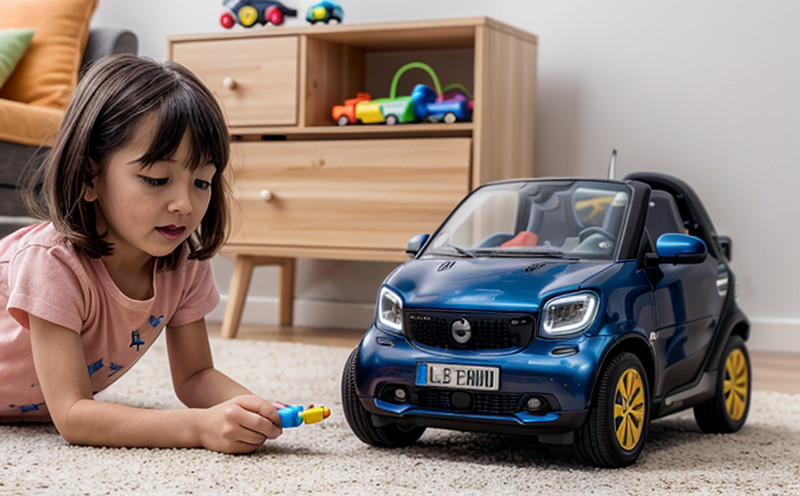ETSI TR 103 305 Risk Assessment for IoT Toy Devices
The European Telecommunications Standards Institute (ETSI) Technical Report ETSI TR 103 305 provides a risk-based approach to the security assessment of IoT toy devices. This service ensures that manufacturers and developers can identify potential risks in their products early in the design phase, allowing them to mitigate these risks before product launch.
IoT toys are increasingly becoming popular among children due to their interactive features and ability to connect with smartphones or other electronic devices. However, this connectivity also introduces new security challenges that need to be addressed. ETSI TR 103 305 provides a structured method for assessing the risks associated with these connected toys.
The report covers various aspects of risk assessment including:
- Identification of potential threats and vulnerabilities
- Evaluation of the likelihood and impact of these threats
- Determination of appropriate countermeasures to mitigate risks
- Continuous monitoring of security postures over the product lifecycle
The process outlined in ETSI TR 103 305 helps organizations comply with relevant regulations such as the General Data Protection Regulation (GDPR) and the Network and Information Systems Directive (NISD).
For quality managers, compliance officers, R&D engineers, and procurement teams working on IoT toy projects, this service provides a clear framework for conducting thorough security assessments. By following the guidelines in ETSI TR 103 305, organizations can ensure that their products meet high standards of safety and security.
The methodology described in the report is designed to be adaptable to different types of IoT toys, making it suitable for a wide range of product designs. It also emphasizes the importance of considering both technological and non-technical factors when assessing risks.
One key aspect of ETSI TR 103 305 is its focus on continuous improvement. As technology evolves, so too must our methods for assessing security risks. The report encourages regular reviews and updates to the risk assessment process to keep pace with changing threats and vulnerabilities.
In summary, ETSI TR 103 305 offers a comprehensive approach to risk assessment that is essential for ensuring the safety and security of IoT toy devices. By following this methodology, manufacturers can protect their products from potential risks while also complying with relevant regulations.
Applied Standards
The ETSI TR 103 305 Risk Assessment for IoT Toy Devices is aligned with several international standards, including:
- ISO/IEC 27032-1:2017 Information technology – Security techniques – Protection of critical information infrastructure against cyber threats
- ISO/IEC 29147:2013 Information security management systems – Requirements for information security controls
- ISO/IEC 27035:2011 Information technology – Security techniques – Information security governance
The alignment with these standards ensures that the risk assessment process is robust and can be integrated into existing quality management systems. It also provides a benchmark for best practices in cybersecurity.
Eurolab Advantages
Eurofins Eurolab, as an accredited laboratory with extensive experience in toy testing, offers unique advantages when it comes to providing ETSI TR 103 305 Risk Assessment for IoT Toy Devices:
- Expertise in conducting comprehensive security assessments
- State-of-the-art facilities and equipment
- Comprehensive knowledge of relevant regulations and standards
- Experience working with a wide range of clients across different sectors
Our team of skilled professionals is dedicated to ensuring that your products meet the highest standards of safety and security. We offer personalized services tailored to the specific needs of each client, providing detailed reports and recommendations based on our findings.
Environmental and Sustainability Contributions
Eurofins Eurolab's commitment to sustainability extends beyond just conducting tests; it also involves promoting sustainable practices in the toy industry. By helping manufacturers identify potential risks early in the design phase, we contribute to reducing waste and minimizing environmental impact.
- By ensuring that toys are secure from the outset, we prevent recalls and product discontinuations
- This reduces the need for replacements or new products
- Avoiding unnecessary production runs conserves natural resources
- Promoting a culture of safety and security can lead to longer-lasting toys, reducing overall consumption





